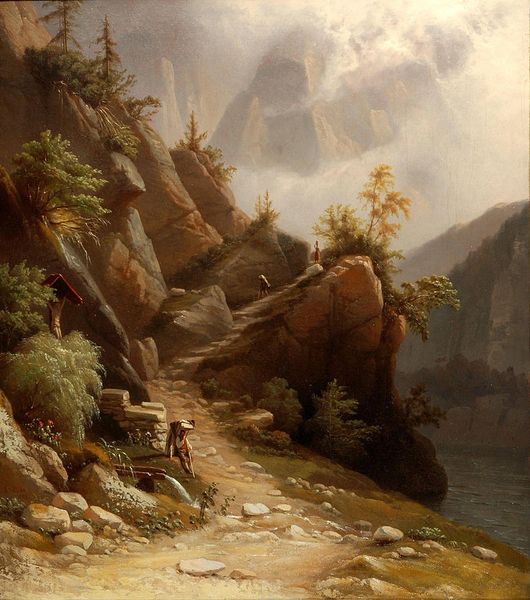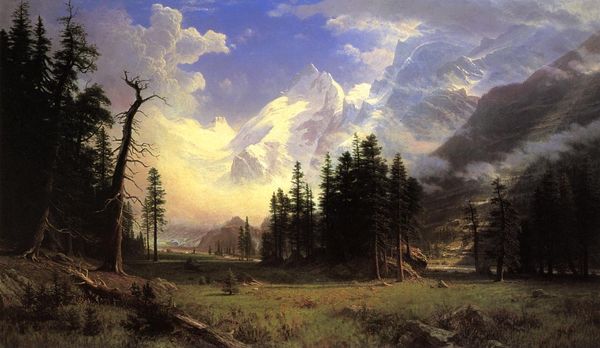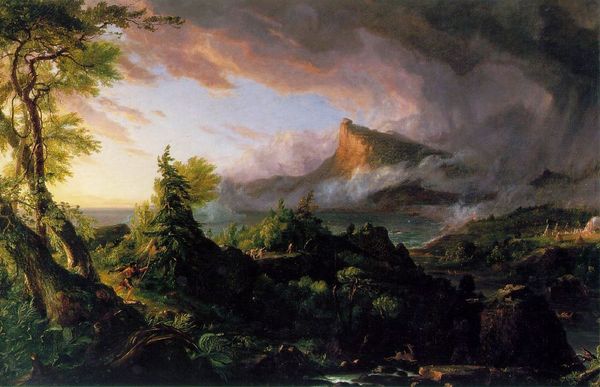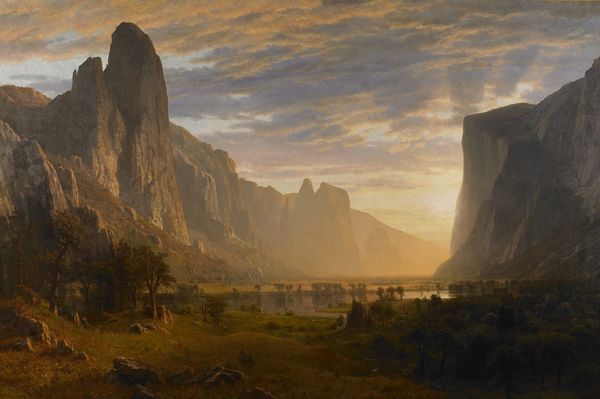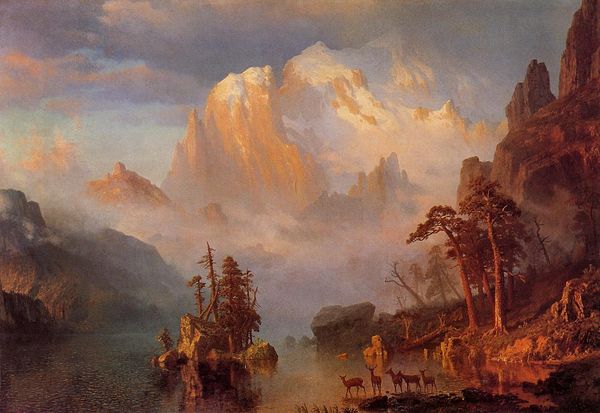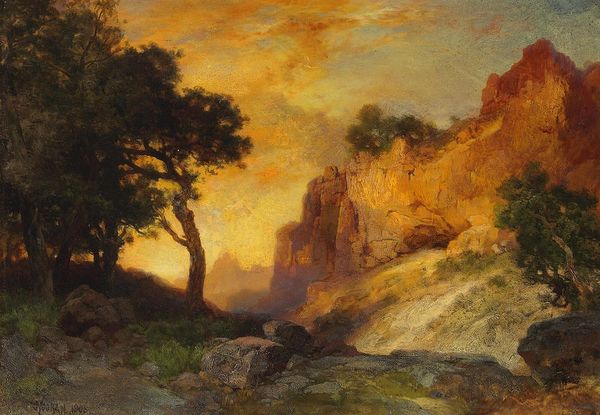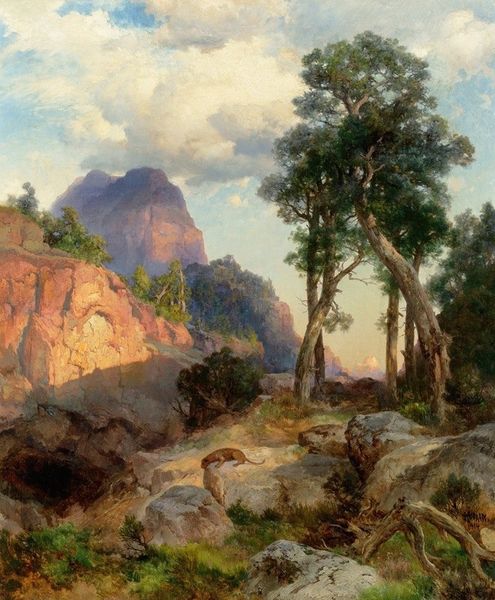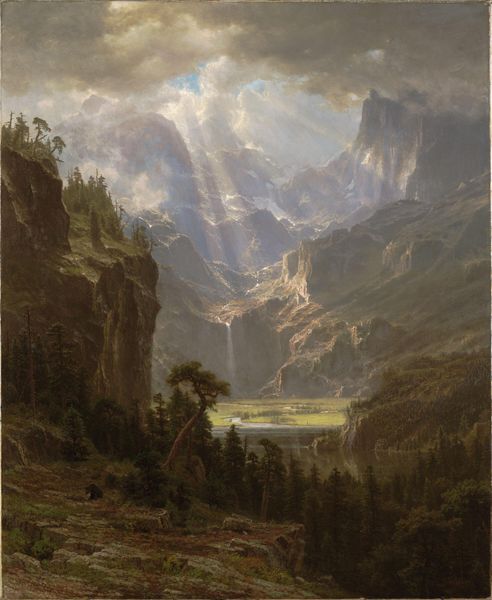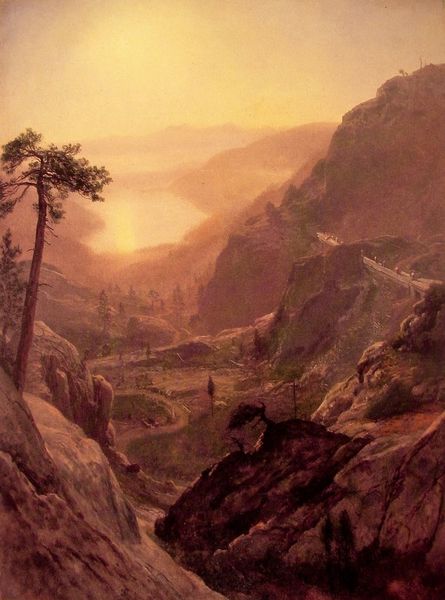
Copyright: Public Domain: Artvee
Curator: At first glance, the subdued palette evokes a sense of serenity, a certain… tranquility hangs in the balance between light and shadow here. Editor: This is "The Merced River in Yosemite," painted in 1868 by Albert Bierstadt. The oil paint is expertly layered, creating an almost ethereal depiction of the Yosemite Valley. Bierstadt was associated with the Hudson River School. Curator: The romanticism is certainly evident; just look at how he’s positioned the human figures. The way those small figures sit by the campfire really emphasizes a harmony between humanity and the overwhelming scale of nature. The symbolic message seems quite clear. Editor: Yes, and it is interesting to note how that small triangle, made up of human presence and fire on the shore, mirrors the large shape of the monolithic cliff in the misty distance. Do you see how he has balanced those elements to direct our gaze? Curator: Definitely. Beyond this obvious harmony, consider Yosemite itself: a sacred place for indigenous tribes, now reimagined as an American Eden through the lens of Manifest Destiny. This is landscape as national myth. Editor: True, but from a formalist perspective, the romanticism overwhelms any hint of stark realism; it’s undeniably idealized, carefully crafted, not so much a direct transcription of place as it is a…composition. Notice the careful placement of the trees to frame the vista. Curator: Idealized, perhaps, but consider that he is not just representing a physical place, he is rendering a feeling, an attitude to the land. Look at how nature provides a backdrop to the humble act of cooking a meal by a warm fire. It almost romanticizes the rugged pioneering spirit, right? Editor: Agreed. It gives one a sense of both the temporal and the monumental...something about the overall construction offers us, the viewer, not only a view, but also a carefully orchestrated scene meant to provoke a certain...response. Curator: Well, thank you, as usual I have taken an anthropological dive into this seemingly innocent landscape. I have also noted how time shapes how we consume even innocent painting, since the painting now conjures up historical associations. Editor: Thank you; the chance to simply think about brushstrokes and shapes reminds me to enjoy things as they appear on the surface, while seeing hints of deeper structural elements below.
Comments
No comments
Be the first to comment and join the conversation on the ultimate creative platform.

